5 visuals showing how AI is (and isn’t) changing our relationships
A quick look at five studies worth knowing about
There’s a lot of research on trends in the AI companion space. Occasionally, I’ll share it here with color commentary (written by me, not AI). Here’s a quick look at five studies worth knowing about.
1. Your colleagues may trust AI more than they trust you. IMHO, this is the chart of the summer: I’m astounded it hasn’t gotten more traction in the LinkedIn AI hot takes world… probably because people are too busy partnering with ChatGPT to write their LinkedIn posts.
An Upwork survey found that workers who are the most productive with AI are turning away from connections with colleagues. While this is a clear signal of how AI could start to displace our weak ties, it also has implications for companies’ bottom line. Employers should be *worried* about stats like this because creating a siloed but productive organization can easily harm performance, decimate a culture of innovation, and even hinder well-known quality control measures.
Source: Upwork, 2025
Note on methodology: Upwork surveyed 1,250 C-suite executives; 625 full-time, salaried employees; and 625 freelancers. I couldn’t find these numbers disaggregated by worker type, which would be interesting to understand…
2. Your kids may be considering AI romance. Or know someone who is. Often when I talk to parents of teens about AI companionship, their first reaction is to assume that the phenomenon isn’t widespread–specifically, they tend to say that their kids aren’t engaging with this new technology. Many say their kids think it’s silly or weird.
While I’m sure some of them are right, that’s not the whole story. Recent data from Common Sense Media (more on that below) suggests that over 50% of teens engage monthly with AI companions. And equally important, there are new sentiments emerging among younger generations about what exactly qualifies as a “relationship.”
The Institute for Family Studies found that a quarter of the young adult population is here for AI romance. Of note, frequent porn consumers were significantly more likely to say AI could replace real-life romance… so AI companions are likely drafting off of a host of digitally mediated intimacy norms that have been shifting since long before Generative AI companions broke through in the market.
Source: Institute for Family Studies, 2024
Note on methodology: This survey is from 2024. I suspect numbers may be shifting as more AI companion apps scale in the market. Of course, we don’t know in what direction. Do more apps make young adults more open to the possibility of AI romance, or is there backlash growing in favor of IRL romance?
3. AI companions are a viable alternative to loneliness, but users rarely accept them as totally authentic.
Last year, Harvard Business School researcher Julian de Freitas and his colleagues came out with two important studies on AI companion tools. The first demonstrated that AI companions can alleviate loneliness on par with a human (the study was silent, however, on the possibility that we could be curing loneliness while scaling isolation).
Source: Freitas et al, 2024
But the same researchers discovered something else: individuals also resist AI companions, and view them as fundamentally incapable of realizing the underlying values of relationships, particularly mutual caring. Although using AI tends to soften some of these sentiments and increase users’ beliefs in AI companions’ capabilities, they still tend to judge them as an inauthentic relationship.
Source: Freitas et al, 2024
4. Nonusers may just be judgmental assholes who don’t understand the true benefits of AI companions. While AI companionship may still face an Overton Window challenge around the majority’s beliefs regarding what constitutes “real” and mutual relationships, there still appear to be pretty stark divides between how users and nonusers rank the benefits and drawbacks of this new technology.
A study by two Princeton researchers, Rose E. Guingrich and Michael Graziano, found that companion chatbot users indicated that these synthetic relationships were beneficial to their social health–their connections with family and friends and their self-esteem– whereas non-users viewed them as harmful. Crucially the findings suggest that AI companionship and human connection don’t have to be zero sum. AI companions could be offering practice, confidence, or something else that translates to better offline connections.
Source: Guingrich & Graziano, 2025
5. Human interactions are still more satisfying–to most teens. Common Sense Media’s July report on youth and AI companions put a stake in the ground: teens are using AI companions, whether or not adults know or care (ahem, see #2 above). This is officially mainstream and based on the market conditions, massive investments, and rapidly advancing technologies, these companions are well-poised to disrupt human connection as we know it.
And/but: their data suggested that teens still value human connection over AI. A significant majority said they find AI conversations less satisfying than human conversations.
As an advocate for preserving and growing human connection, this stat gives me a lot of hope. Consistent with Freitas et al’s findings, people–including younger users–are still discerning something qualitatively different between human and synthetic interactions, and still may be yearning for the real thing.
Source: Common Sense Media, 2025
The bottom line? These studies don’t paint a particularly clear picture of what’s happening between AI and humans… instead they all raise a big tangle of technical, cultural, and empirical questions.
But my own editorialized TLDR: AI companions are gaining real traction and real relationships still have a shot—if we invest in them, and continue to understand if and how AI companions could support prosocial behaviors.
What do you see when you look at these charts? What’s signal, what’s noise, and what do we still not understand?


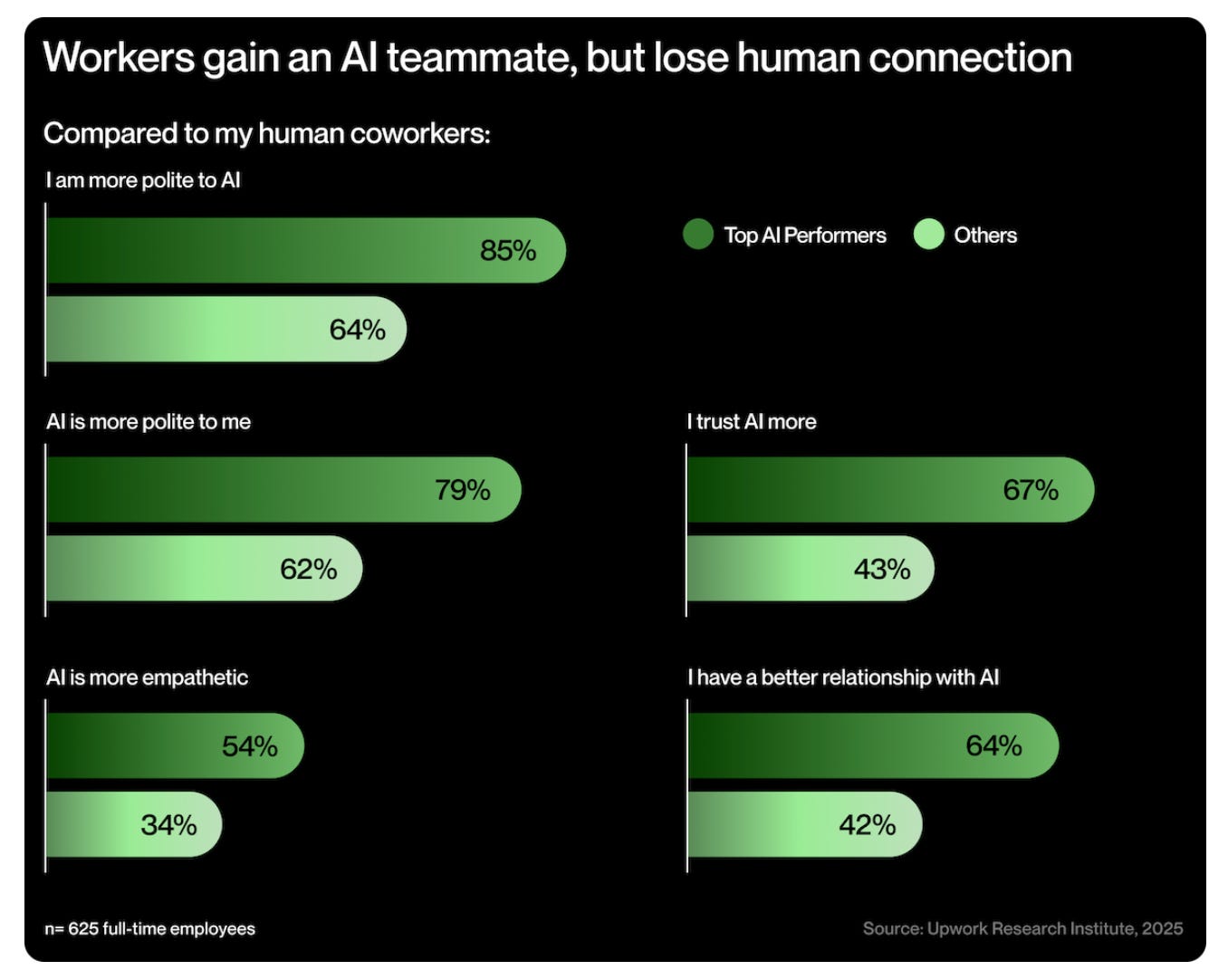
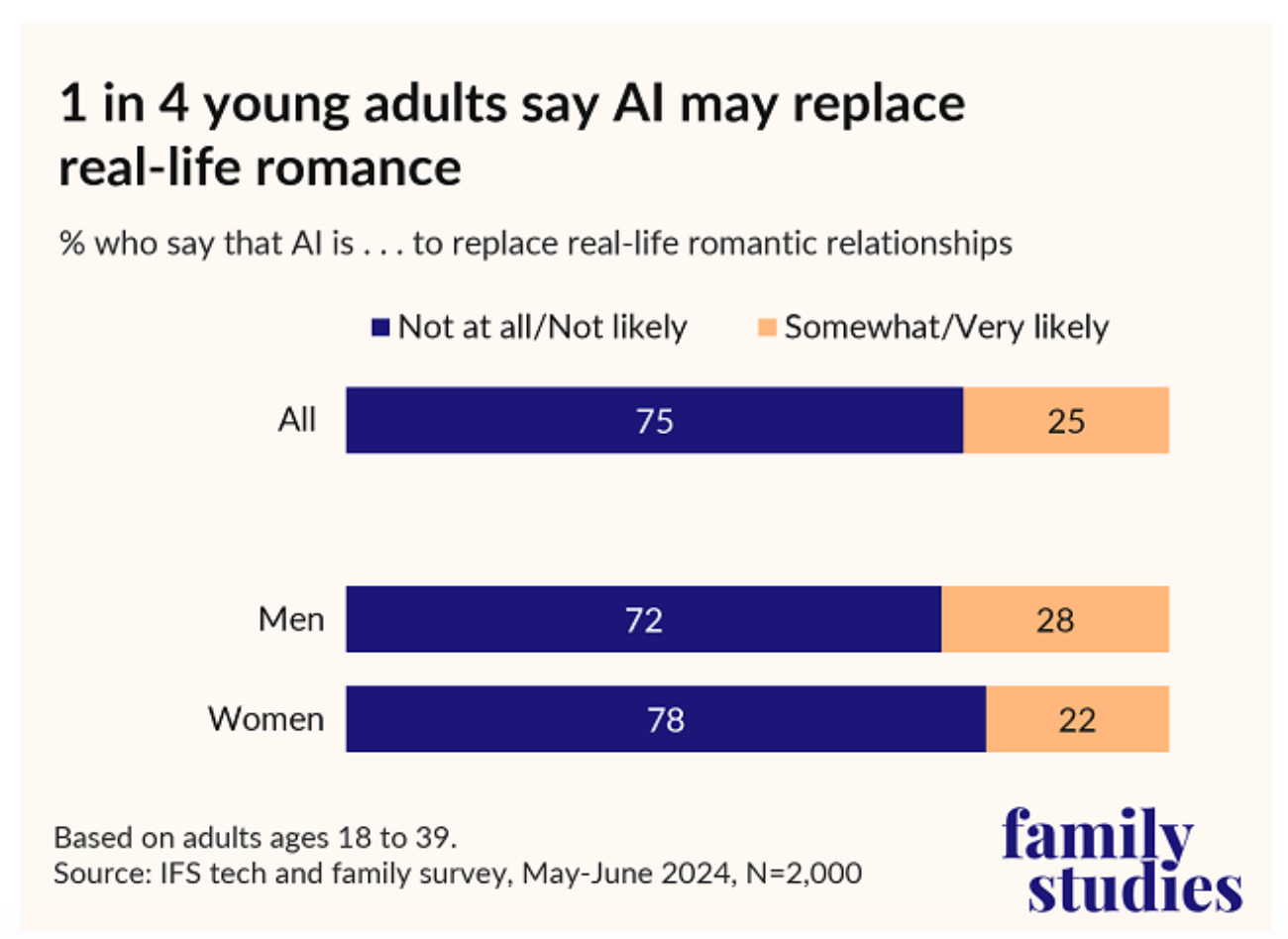
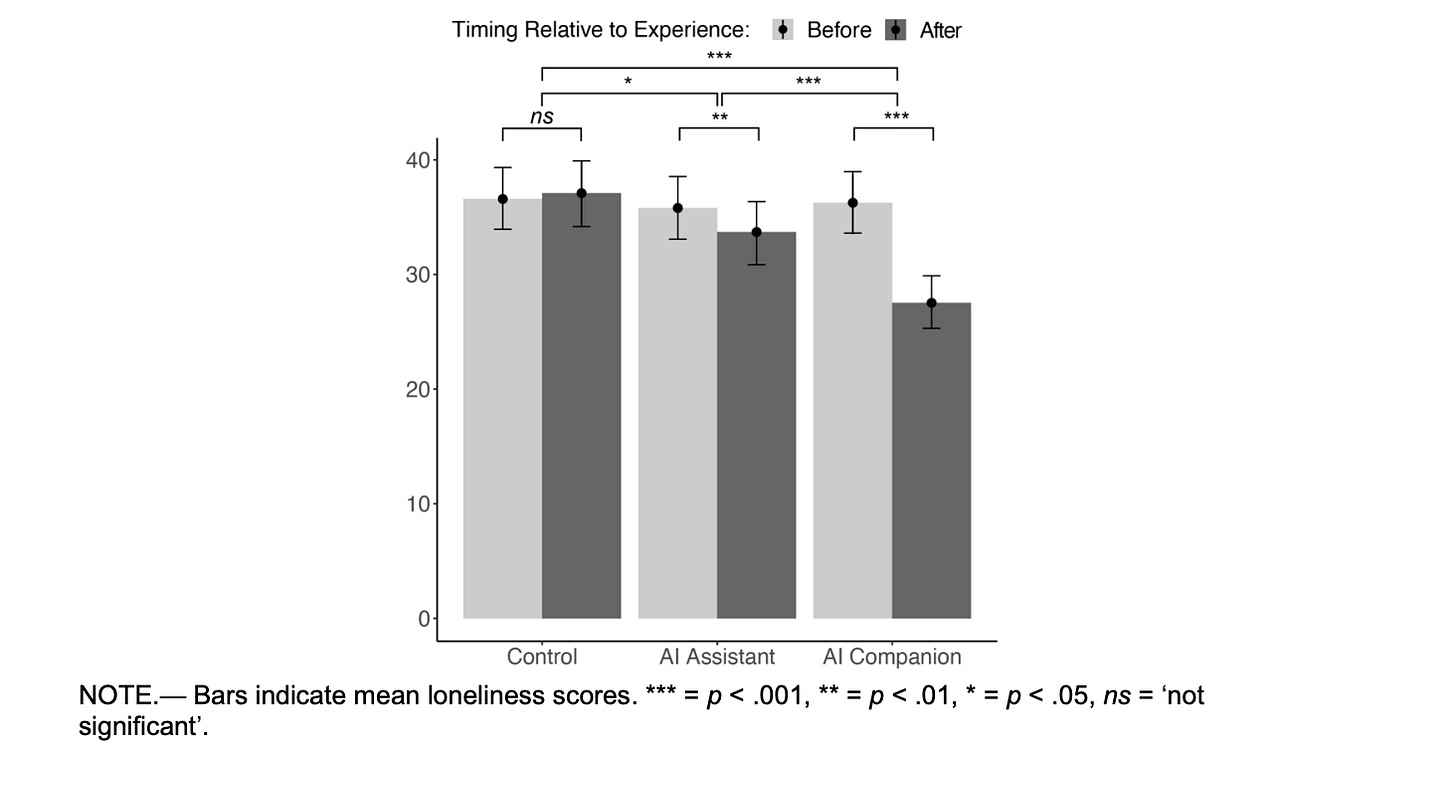
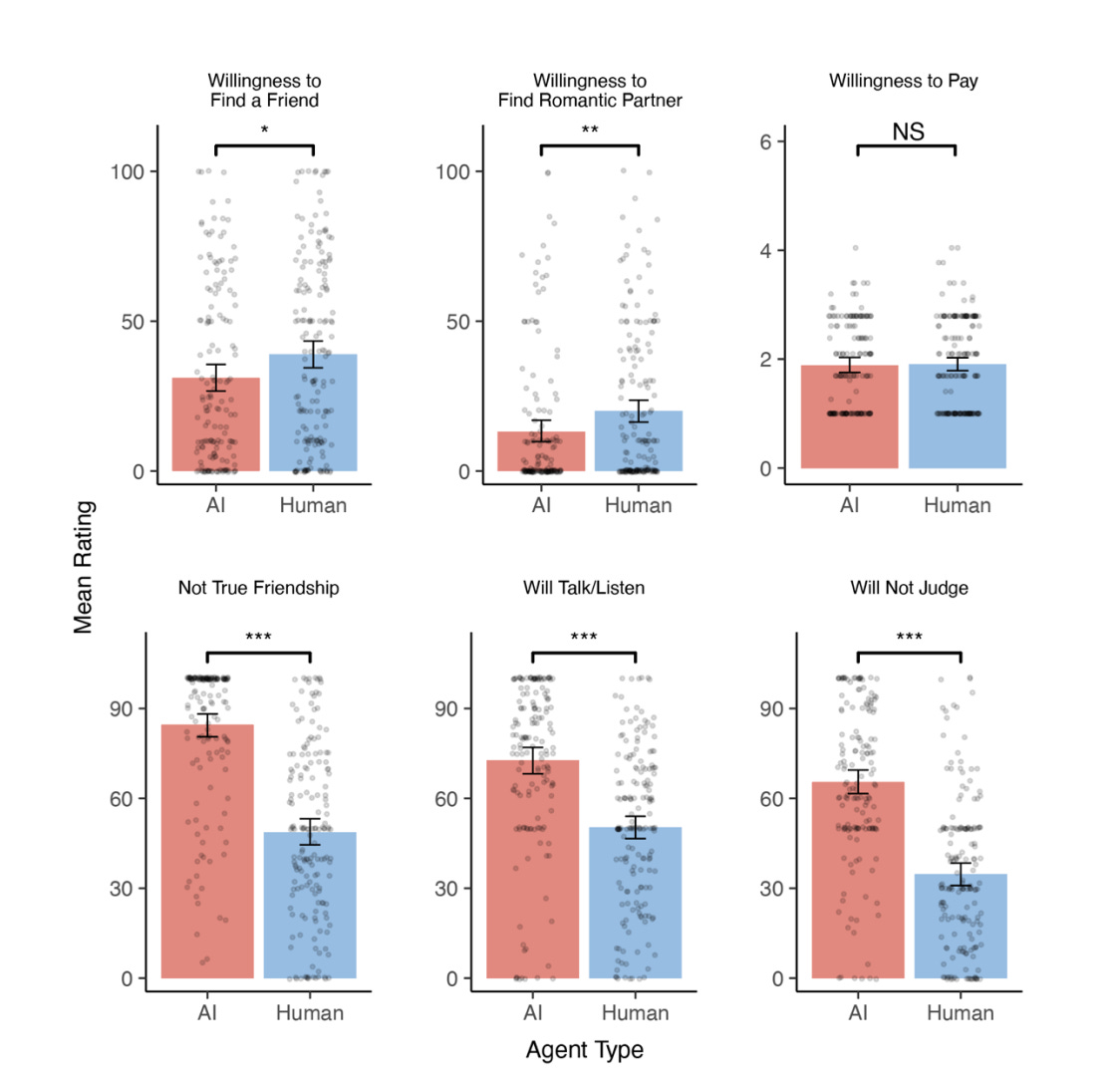
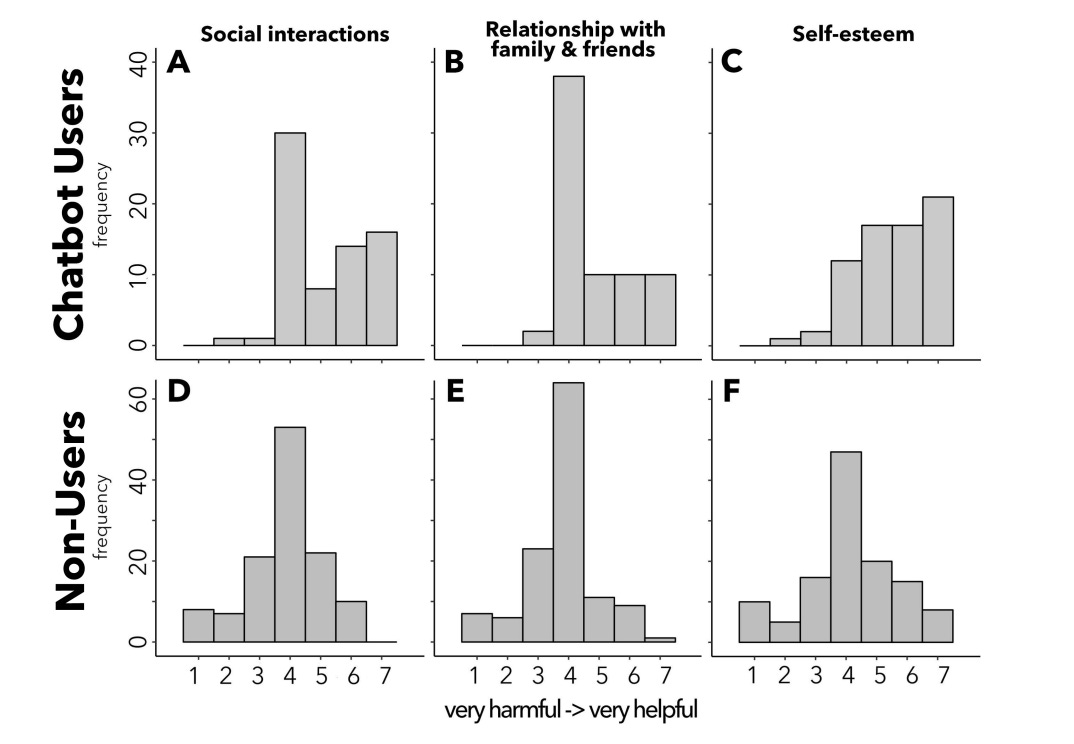
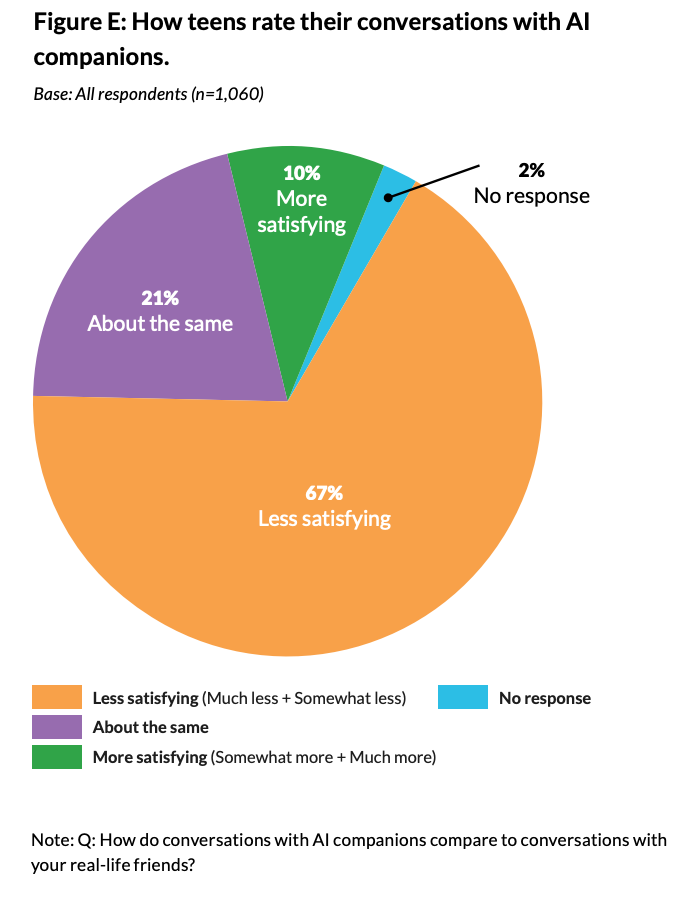
I highlighted that Upwork study at a career services conference recently, and there was a lot of "confusion" on why humans would turn to AI rather than a "professional."